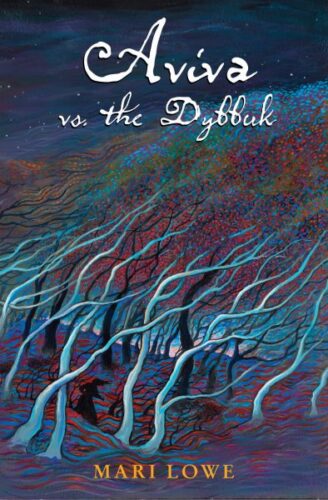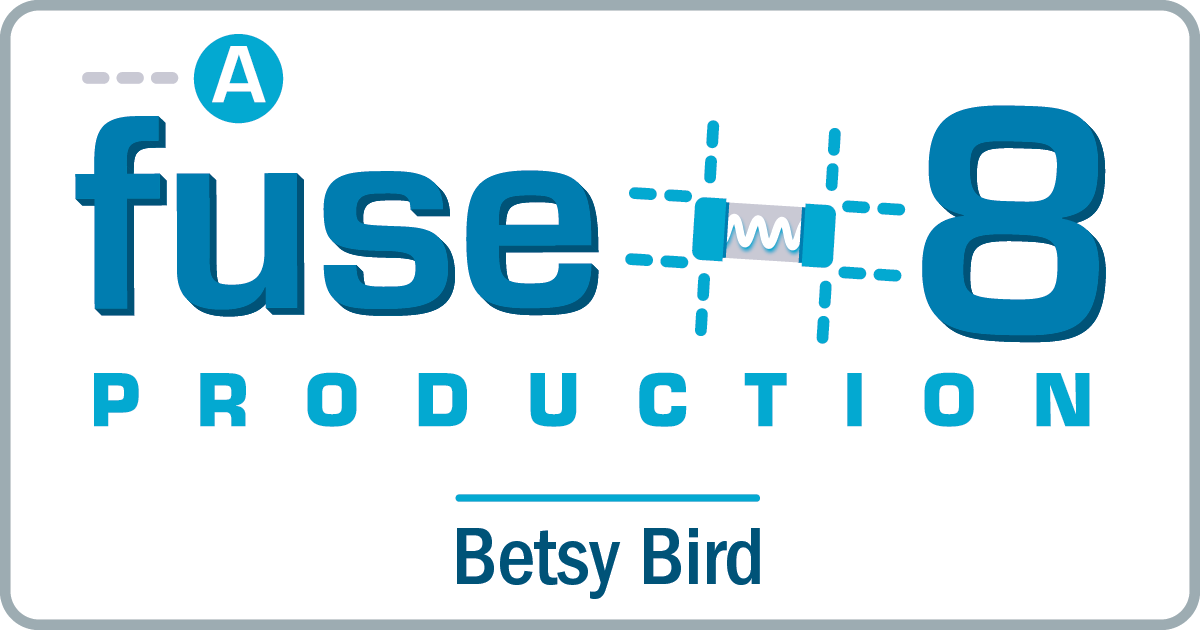Review of the Day: Aviva vs. the Dybbuk by Mari Lowe

Aviva vs. the Dybbuk
By Mari Lowe
Levine Querido
$17.99
ISBN: 9781646141258
On shelves now
Anyone else noticing how much untreated trauma is swimming about in our children’s entertainment these days? Obviously a person can’t really report about a phenomena when they’re living inside of it, but we’re far enough in (through?) the COVID-19 pandemic to say that I don’t think it’s a coincidence that trauma is the #1 trending topic out there for kids. I mean, look at Disney even. Between Encanto and Turning Red, have you ever seen so many acknowledgments of generational trauma? Children’s books too are finding their own ways to not merely acknowledge the presence of trauma in so many kids’ lives, but also how to face it, handle it, deal with it, and work with it. From picture books to YA novels, it’s our top theme. Trouble is, trauma isn’t just disheartening. It’s also so complicated that to present it poorly could do more harm than good. Such thoughts flickered through my little head when I read Mari Lowe’s Aviva vs. the Dybbuk. An accounting of a family and a tight knit community dealing with the repercussions of a hate crime, the book expertly navigates between taking into account the seriousness of the content while also punctuating it periodically with joy, laughter, and light.
When we first meet Aviva, she’s nine-years-old and has run into the nearby woods to see if her mother, Ema, will notice and come find her. When she stumbles back, cold and numb, her Jewish community has been searching frantically but her mom couldn’t break through her own depression to leave the house. Years later we meet Aviva anew. Her father’s been dead for a while due to some accident, so she and her mom live above and tend a religious pool called a mikvah. The mikvah, unfortunately, is haunted by a dybbuk. In life he would have been a soul who failed to complete a task. Now he takes the form of a 12-year-old boy, causing all kinds of awful mischief. The dybbuk isn’t so bad compared to what Aviva has to deal with at school, of course. Ostracized by her classmates, at least Aviva has the game of machanayim, where she and her former best friend Kayla rule supreme. That is, until the day they get on a fight on the court and are charged with an impossible task. The two must plan a marvelous Bas Mitzvah for all the girls in their class, and they have to do it together. But what starts as a problem, ends up having a solution that will involve healing for Aviva, her dybbuk, Kayla, and the whole community as well.
ADVERTISEMENT
ADVERTISEMENT
I won’t lie. Early on I figured that this book was going to be depressing. I have this super low tolerance for bully-based books (it’s hard not feel like bullies too often provide cheap drama in insufficiently creative children’s books) and for a second there Aviva was checking all the wrong boxes. Former best friend? Check. Classmates unite against the heroine? Check. Dead parent? Parent with clinical depression? Check and check. As a child I studiously avoided reading books that looked like downers (sorry, Bridge to Terabithia). Foolishly, I probably would have avoided this. I mean, that cover, beautiful as it is, is fairly accurate to the tone of the book at the start. Gloom and doom may win awards but what kid wants to wade through misery? Even if the book, like this one, is a handsome 171 pages? That’s where the fun comes in. And yes, fun. There’s actually quite a lot of fun at work here. Aviva happens to be one of her school’s finest machanayim players. Machanayim is described as being like dodgeball with four sections. We used to play a form of it when I was a kid called “Doctor” which was similar. The scenes where Aviva plays, Lowe really knows how to bring the action. Then there’s a section where Aviva and former best friend Kayla go all Scooby Doo and start exploring a creepy tunnel. And then there’s this magnificent scavenger hunt they come up with involving Jello. Add in this highly disturbing encounter with a surprise bad guy nearish the end of the book and you’ve got yourself a story that belies its staid, serious trappings.
Next, I want you to look at how Mari Lowe doles out the information in this story. As mentioned, this book is tightly written and tightly edited. I’ve come to really appreciate a children’s book that doesn’t need two hundred pages to tell a complex storyline. Much of this book reads like a mystery too. Aviva is giving you, the reader, all the information but she is not (spoiler alert?) a wholly reliable narrator. You don’t know that at the beginning, of course. You are inclined to trust your narrator, particularly when they’re in a book for kids. So Aviva starts out by giving you a lot of information about her Jewish community, defining parts of it that might be unfamiliar to you, like the genizah where old holy books are stored before they are buried (there’s also a Glossary at the back of the book). You get used to her giving you the information that you need, and that’s good because she’s not handing it out very quickly. It takes a while to gather pertinent facts about what her life used to be, and why her life is the way that it is now. As a reader, you grow so reliant on Aviva that when the rug gets pulled out from under you, you never see it coming.
A word about the dybbuk. This isn’t my first dybbuk encounter but it may be my best. The only other significant dybbuk book I’ve ever found in a middle grade novel was The Entertainer and the Dybbuk by Sid Fleischman (a book that would probably not get published today). That title, which at best could be described as clunky, used the dybbuk legend in way that felt sacrilegious somehow. This book also relies heavily on having a dybbuk, I mean, he’s in the title after all, but Lowe makes him a living metaphor, which is an interesting take. I do suspect that there will be some critical pushback to the dybbuk’s true nature and Aviva’s role in its mischief. It could have come across like a cheap narrative tactic, but I didn’t read it that way. I thought that it handled the topic with a lot of care and thought. Similarly, Ema’s depression has to walk the tightrope between Aviva’s understanding and her resentment. Notice how Lowe very carefully alludes to the fact that Ema had some depressive issues prior to her husband’s death as well. None of the serious issues in this book have magical solutions either. That’s, for me, part of why the book works as well as it does. There is no easy way out of working through a tragedy. Nor, for that matter, is there a roadmap.
It helps if you can write, of course. That first chapter. It reads completely differently after you finish the book and you have all the information. The knowledge you acquire by the end of Aviva vs. the Dybbuk deepens your understanding of the beginning so well. From the outset, I knew it was a great first chapter anyway. Heck, it even has a great first sentence (which is by no means a given in novels for kids these days). Listen to this: “When I was nine years old, I slipped out of our little apartment and hid in the woods, just to see if anyone would notice I was gone. Only the dybbuk saw me leave.” Technically that the first two sentences, but I doubt you’ll penalize me for its inclusion. This first sentence also outlines the chapter precisely. Aviva goes into the woods. She stays there a long time. Finally she goes home and runs into a search party, frantically trying to find her. She’s young and not having any information, the reader assumes that the people looking are upset for the ususal reasons. It’s only when you find out later what must have been running through their minds (and entirely escaping young Aviva’s) that the chapter takes on a more desperate, more urgent tone. These people are scared to death of that girl’s disappearance and not simply because it’s cold and dark. Something has happened to make them particularly wary and frightened. The whole book is like that. You read it once. You discover the ending. You read it again. And as you do, you begin to notice things, like how the water of the mikvah does bless Aviva, just not in the way you’d think. Lowe also has the ability to destroy you with the most careful of sentences. Near the end of the book a woman says to Aviva something incredibly important, and the book notes that her eyes, “have seen more evil and more kindness in this world than anyone else I’ve ever known.” It is good to put yourself in the capable hands of a great writer sometimes.
When I really like a book for kids, I try to find just the right pitch for it. I want to describe it to kids so that they’ll want to read it, and to adults so that they’ll want to buy it/award it/read it. So how do I pitch this to kids? A pity most of them aren’t familiar with The Boggart by Susan Cooper. That’s a story of a mischievous spirit wreaking havoc, though it certainly lacks Lowe’s penchant for working in larger themes. The House of Dies Drear by Virginia Hamilton isn’t a terrible comparison, but what kid remembers it anymore? Perhaps a better link would be something with a twist ending. Certainly with adults I’ll be mentioning The Sixth Sense (and, fortunately, the twist at the end of this book, while it has some parallels to that M. Night Shyamalan film, is different enough that my saying that doesn’t give anything away). But of course that’s also not quite what’s going on here either. Nothing I compare this book to really gets at its intricate layering of myth, trauma, fun, awkwardness, and sheer believability. At times it can feel as though Ms. Lowe is spinning a dozen plates in the air and something is bound to fall. Nothing fell for me, though. This is a marvelous model for how to write for kids. A mystery at its core. An unreliable narrator. A supernatural creature. Huh! I think I’ve figured out how I’ll describe it for kids! Give it a read and find your own way too.
On shelves now.
Source: Galley sent from publisher for review.
Filed under: Best Books, Best Books of 2022, Reviews, Reviews 2022
About Betsy Bird
Betsy Bird is currently the Collection Development Manager of the Evanston Public Library system and a former Materials Specialist for New York Public Library. She has served on Newbery, written for Horn Book, and has done other lovely little things that she'd love to tell you about but that she's sure you'd find more interesting to hear of in person. Her opinions are her own and do not reflect those of EPL, SLJ, or any of the other acronyms you might be able to name. Follow her on Twitter: @fuseeight.
ADVERTISEMENT
ADVERTISEMENT
SLJ Blog Network
Report: Newberry and Caldecot Awards To Be Determined by A.I.?
Magda, Intergalactic Chef: The Big Tournament | Exclusive Preview
Fifteen early Mock Newbery 2026 Contenders
When Book Bans are a Form of Discrimination, What is the Path to Justice?
Fast Five Author Interview: Naomi Milliner
ADVERTISEMENT








This outstanding book stays with you long after you read it. The conflicts, emotions, and the characters are haunting. Although it’s geared for young readers, everyone who was once a teenager will identify with some of the feelings and circumstances so beautifully written in Mari Lowe’s book.
This review demonstrates fine writing and understanding too!